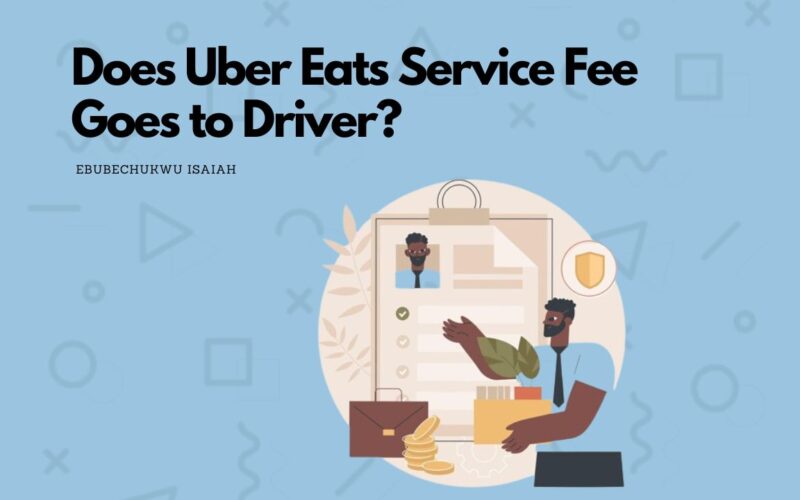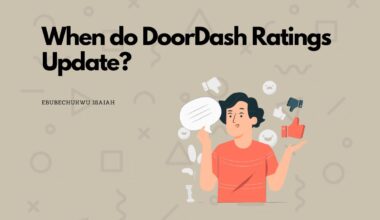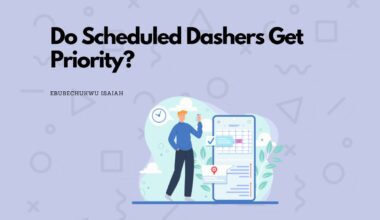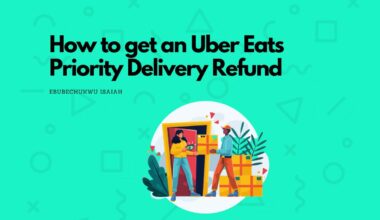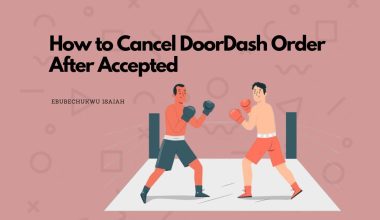When ordering from food delivery companies, there can be just too many fees that can piss you off, but perhaps knowing where they go or their purpose can give you a sort of relief.
Well, if that helps…
For Uber Eats, their charges can be basically divided into 4 categories:
- Delivery fee
- Service fee
- Small Order fee
- Tax, etc.
If you look closely, there’s a delivery fee and yet a service fee.
But why is this? Does the delivery fee go to the company and the service fee to the driver?
Or perhaps, the other way round?
That’s a nice guess if you ask me, but not entirely true.
Want to know exactly how these fees work? Stick with me.
Does Uber Eats Service Fee Goes to Driver?
This confusion (or question) has been to the test of time if you ask me. I’ve come across a lot of people who make this mistake (yes, it’s a mistake and a big assumption there)
It’s pretty much justifiable though, since the name “service fee” can be misleading and easily interpreted as a fee paid to a person rendering the service – in this case, the driver.
However, that’s not exactly what happens at Uber Eats.
Enough chatters. Straight to the question, does the service go to drivers?
No. The service fee is the company’s entire possession and doesn’t go to drivers.
On Uber Eats, the service fee is a mandatory fee that applies to every order made on the platform.
According to the company, this is expected to cover the operational cost spent in running the platform. In other words, everything that goes in the back end to make sure the platform works.
This includes anything from app development to customer support, and payment processing, among other expenses.
Lastly, as you might know, service fee varies a lot depending on factors which determines how it’s calculated.
What Goes to Drivers on Uber Eats?
As we discussed in a previous article, the delivery fee is actually in the company’s possession, and the same goes for the service fee. So what goes to drivers?
Two popular payment models for drivers on delivery platforms are the dynamic model and the flat rate system.
While both are easily influenced by market demand, weather conditions, and special promotions, they have distinct mechanisms for compensating drivers.
The dynamic model (what’s used by Uber Eats, DoorDash, etc) adjusts payouts based on a variety of factors such as the time of day, the complexity of the order, the distance of the delivery, and the current demand for deliveries in the location.
For Uber Eats, they get this from a cut of the delivery fee.
But to be honest, as a driver myself, the amount I get is usually around $3 aside from the tips customers make.
Either way, this is the model Uber Eats operates on and it’d vary by location.
The flat rate system, on the other hand, offers a more predictable income, as drivers are paid a fixed amount for each delivery, regardless of the conditions.
Some companies that use this include Postmates (before being acquired by Uber), Grubhub, and Amazon Flex.
What the fees on Uber Eats do in detail
For most people, we, saying the service fee doesn’t go to drivers can seem like their whole life is a lie – perhaps, they also have the definition of other fees wrong.
Let’s make their life a tad messier 😉 as we explain the actual intent of every other fees.
Delivery fee
The most important fee on the list, the delivery fee is a fee expected to cover just every expense that goes into making your delivery.
This includes anything from the driver’s earnings, and processing refunds (in the event it happens).
Just like the service fee, it’s important to mention that this fee doesn’t have a flat rate but varies according to several factors discussed below:
- The merchant you order from
- Your location
- Availability of drivers in your area
Keep in mind that only a portion of this is given to drivers, contrary to what some people are made to believe.
As a driver myself, on best days, I get $3 per delivery aside from tips.
Anything less, usually $2, is the norm.
Disclaimer: It may also vary by location
Small Order fee
This is a fee only applicable to orders below a certain amount not known to the public.
The rationale here is that since the effort Uber Eats put into bigger deliveries (where they earn more) is not different from smaller deliveries, the small order fee should serve as way to recoup their standard profit on deliveries.
Obviously, you can get rid of this fee by adding more orders. 😉
But most importantly, this fee doesn’t go to drivers.
Tax, etc.
Depending on the state, you’ll have to pay tax on most delivery companies you order food from.
Usually a few dollars, but it’s worth mentioning.
Most importantly, whatever taxes you’ll need to pay would be made to delivery companies (in this case, Uber Eats) who then forward them to the government as they claim.
As an Amazon Associate, I earn a small commission from qualifying purchases. Learn more about this.
